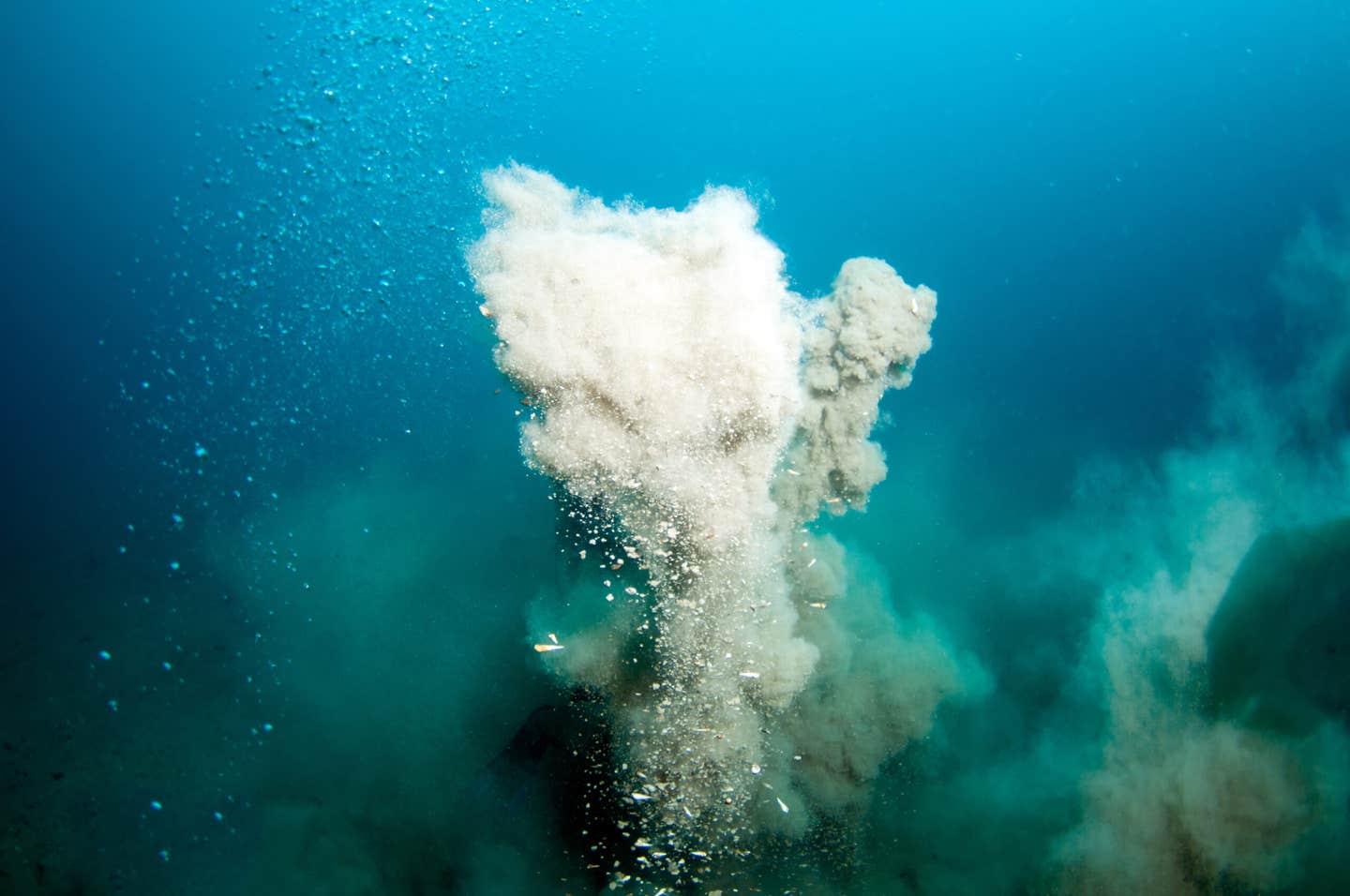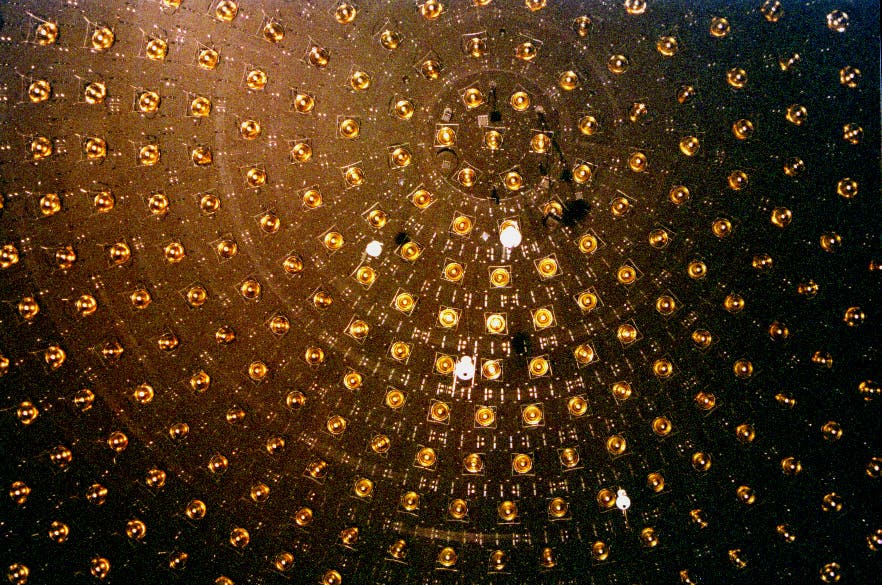Scientists discovered a massive hydrothermal world hidden beneath the Pacific Ocean
Far below the waves of the western Pacific, researchers have uncovered a hydrothermal system unlike anything seen before

Deep below the Pacific, scientists found the Kunlun hydrothermal field—a massive hydrogen source supporting unique ecosystems. (CREDIT: Shutterstock)
Far below the waves of the western Pacific, researchers have uncovered a hydrothermal system unlike anything seen before. Known as the Kunlun hydrothermal field, it lies near the Mussau Trench on the Caroline Plate, about 80 kilometers west of Papua New Guinea. What makes it so remarkable is its size, its massive hydrogen output, and the thriving ecosystems that live around it.
The field spans 11.1 square kilometers—larger than four Central Parks combined—and contains 20 giant seafloor craters. Some craters measure more than a kilometer across, with steep walls dropping 130 meters into the seafloor. To explore them, scientists piloted the Fendouzhe submersible, giving humanity its first close look at one of the largest hydrogen-rich systems on the planet.
A System Fueled by Chemical Reactions
Hydrothermal systems form when seawater seeps deep into Earth’s crust through cracks and fractures. There, it reacts with mantle rocks and rises back up, carrying heat and minerals. At Kunlun, that process takes a dramatic form.
When seawater meets a type of mantle rock called peridotite, it triggers a chemical reaction called serpentinization. This process produces hydrogen gas, alkaline fluids, and carbonate minerals. In most places, these reactions are limited to mid-ocean ridges, where tectonic plates spread apart. Kunlun, however, formed in a different setting—an intraplate zone where a tectonic plate is bending before subduction begins.
That unusual environment means the scale of hydrogen production is enormous. Researchers measured hydrogen concentrations between 5.9 and 6.8 millimoles per kilogram in vent fluids. Those fluids are warmer than the icy waters around them, reaching nearly 20 °C compared to the surrounding 1.5 °C. Based on their measurements of vent flow speed—ranging from 10 to 25 centimeters per second—the team estimated the entire field produces about 4.8 × 10¹¹ moles of hydrogen every year.
That is not a small number. It accounts for about 5 to 8 percent of all the abiotic hydrogen created at submarine vents worldwide. When looking only at serpentinization-driven hydrogen, Kunlun may generate nearly half of the global amount.
Related Stories
- Lost Pacific tectonic plate named Pontus found after 160 million years
- Scientists discovered remnants of a prehistoric seafloor beneath the Pacific Ocean
A Crater Field Larger Than the Lost City
Deep-sea hydrothermal systems are rare, but one of the best known is the Lost City, discovered in the Atlantic Ocean more than two decades ago. Lost City earned its name from its tall carbonate towers and the possibility that it represents one of the longest-lived venting environments on Earth. But Kunlun dwarfs it.
The newly discovered system is more than 100 times bigger than Lost City. Instead of spindly towers, Kunlun features huge craters resembling volcanic pipes. These circular pits, some over a kilometer wide, may have formed through gas-driven eruptions followed by long cycles of hydrothermal activity. Inside them, researchers found large carbonate deposits made of dolomite and calcite—minerals that usually dissolve at such ocean depths. Their presence shows that the alkaline, hydrogen-rich fluids at Kunlun create a stable environment where these rocks can form and persist.
“The Kunlun system stands out for its exceptionally high hydrogen flux, scale, and unique geological setting,” said Sun Weidong of the Institute of Oceanology, Chinese Academy of Sciences, who led the study. He noted that its location far from mid-ocean ridges challenges long-held assumptions about where hydrogen-rich systems can exist.
Life Thriving Without Sunlight
Where there is chemical energy, there is often life. The vents at Kunlun are no exception. Near the warmer fluid discharges, scientists spotted swarms of alvinocarid shrimp. Around the cooler vents, they found squat lobsters, clusters of sea anemones, tubeworms, and even scorpionfish.
These creatures survive in total darkness, relying not on photosynthesis but on chemosynthesis, where microbes use hydrogen and other chemicals as energy sources. The food webs that grow from this process are rich and diverse, creating small oases of life in the otherwise barren deep sea.
“What’s particularly intriguing is its ecological potential,” Sun explained. “We observed diverse deep-sea life thriving here—shrimp, squat lobsters, anemones, and tubeworms—species that may depend on hydrogen-fueled chemosynthesis.”
These ecosystems may resemble the earliest forms of life on Earth, which likely depended on hydrogen-rich environments rather than sunlight. Studying them may give scientists a better sense of how life began billions of years ago.
Lessons From Land and Sea
Kunlun’s craters don’t just look like volcanic pipes. They also share a resemblance with unusual surface features on land. In certain arid regions, circular bare patches known as fairy circles dot the landscape. Some geologists believe these circles are linked to hydrogen leaks rising from deep underground.
The comparison is striking. On land, the circles are only a few meters across. Under the sea at Kunlun, the craters plunge more than 100 meters deep. While the scale is different, the shapes suggest similar processes may be at play, with gas-rich fluids shaping the ground above them.
This parallel reminds you that Earth is full of linked systems. What happens deep below the ocean floor may share patterns with what you see in deserts thousands of miles away.
A Natural Laboratory for Early Earth
The Kunlun hydrothermal field is more than a geological curiosity. It provides a natural laboratory where scientists can study processes central to Earth’s history. Hydrogen is one of the simplest and most abundant elements in the universe. On early Earth, it may have been a key ingredient for the first living molecules.
By looking at the alkaline, hydrogen-rich fluids at Kunlun, researchers can test theories about the origins of life. The setting mirrors conditions believed to have existed billions of years ago—moderate warmth, hydrogen gas, and carbonate minerals forming in an environment shielded from sunlight.
These conditions also resemble what may exist on other worlds. If hydrogen-rich vents support ecosystems at the bottom of Earth’s oceans, similar systems could harbor life on icy moons such as Europa or Enceladus.
Practical Implications of the Research
The discovery of the Kunlun hydrothermal system matters for several reasons. It shows that Earth produces vast amounts of hydrogen in places far from spreading ridges, overturning older ideas about where serpentinization can happen. For energy researchers, it highlights the possibility of natural hydrogen reservoirs beneath the seafloor. That knowledge could inspire future exploration of clean hydrogen as a fuel source.
For biologists, Kunlun is a new window into deep-sea ecosystems powered by chemical energy. It shows that life can thrive in hydrogen-rich environments without sunlight, giving insights into how life began on Earth and where it might exist elsewhere in the solar system.
For geologists, the system provides clues about how tectonic activity, chemical reactions, and gas release shape the ocean floor. The discovery strengthens the idea that the seafloor is not a static surface but a dynamic chemical reactor.
Research findings are available online in the journal Science Advances.
Note: The article above provided above by The Brighter Side of News.
Like these kind of feel good stories? Get The Brighter Side of News' newsletter.



